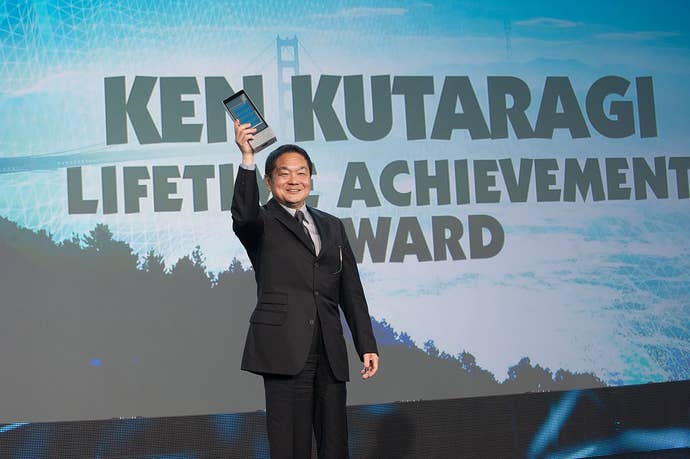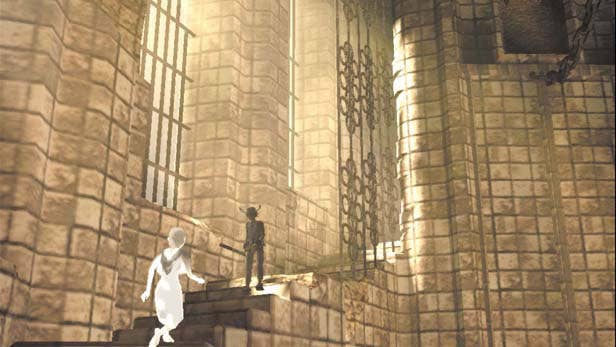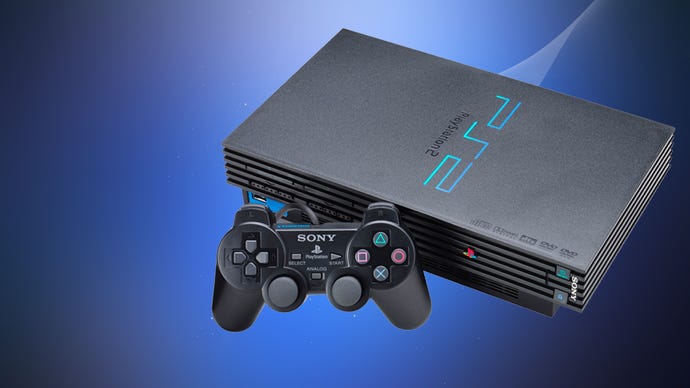The Case for the PlayStation 2 Being the Greatest Console Ever
Why the highest-selling console of all time is also the best.
This article first appeared on USgamer, a partner publication of VG247. Some content, such as this article, has been migrated to VG247 for posterity after USgamer's closure - but it has not been edited or further vetted by the VG247 team.
As I was planning for PlayStation 2's 20th anniversary last week, I asked the team at USgamer if anyone had substantial nostalgia for the platform that cemented Sony's position as the dominant player in the console space. Senior Editor Caty McCarthy, who grew up playing Kingdom Hearts, piped up, "Me. It's the best console." Her reaction caught me off-guard. I had never given serious thought as to whether the PlayStation 2 was in fact the best console. Nevertheless, it got me thinking.
In truth, I've tended to be more of a Super Nintendo stan than anything. Nostalgia is often the beginning and the end of an argument over a particular platform's impact, and I grew up with the SNES, not the PlayStation 2. Still, I have to admit that the PlayStation 2 had one hell of a run.
Digging into the history of the PlayStation 2, which celebrates the anniversary of its release in Japan today, I've been impressed by the sheer breadth of what it had to offer. Before World of WarCraft, the PlayStation 2 had Final Fantasy 11. Before the Wii struck out into gaming's "blue ocean," the PlayStation 2 had the Eyetoy and Singstar. Before the PlayStation 4 had Grand Theft Auto 5, the PlayStation 2 had GTA 3, Vice City, and San Andreas—the games that revolutionized the open-world sandbox genre as we know it today.
The PlayStation 2 isn't just the best selling console of all time; it's home to a dizzying number of unassailable classics. Its dominance in the first decade of the 21st century is matched by only a handful of platforms: the NES, the Game Boy, and maybe the PlayStation 4. The more I think about it, the more I wonder whether Caty is right. Maybe the PlayStation 2 really is the greatest console of all time.
A New Era Begins
The launch of the PlayStation 2 in 2000 was a momentous occasion. Flush with success after winning the previous generation, Sony displayed the same sort of boundless ambition with the PlayStation 2 that would later get it into trouble with the PS3. Like the PlayStation before it, the PlayStation 2 reflected Sony Computer Entertainment of America then-CEO Ken Kutaragi's philosophy of putting hardware first. Where the Xbox was functionally a PC built with off-the-shelf parts, the PlayStation 2 was powered by a bespoke CPU called the "Emotion Engine."
It was a complex machine with 10 different processors and six different memory spaces, all of which worked in completely different ways. An anonymous programmer described working on the PlayStation 2 like this: "There are so many amazing things you can do, but everything requires backflips through invisible blades of segfault [a hardware failure condition related to memory protection]."
Launching just a few months after the start of Y2K, the PlayStation 2 got an enormous headstart over the Xbox and GameCube, which wouldn't launch until the following year. A raft of exciting games were promised for the console: Metal Gear Solid 2, Gran Turismo 2000 (later retitled Gran Turismo 3: A-Spec), and Final Fantasy 10. Just the prospect of the PlayStation 2 launching the following year was enough to put a damper on the Sega Dreamcast, which launched with much fanfare but couldn't sustain its momentum.

Interestingly, for all of its subsequent success, the PlayStation 2 actually got off to a pretty poor start. When it launched in the U.S., I rented one with a friend only to discover that, outside of a small number of respectable middle-tier games like SSX and Tekken Tag Tournament, there was little to play. It had no killer apps (unless you counted Fantavision, the greatest fireworks game in history). We ended up renting Armored Core 2?, an adequate but not particularly exciting mech sim by then-obscure developer FromSoftware.
Behind the scenes, the PlayStation 2 was hit by parts shortages, resulting in a mere 500,000 units being available for the U.S. launch. The North American PlayStation 2 also purportedly used a different graphics synthesizer than the Japanese version, leading to manufacturing difficulties. Disc read errors plagued launch units.
Nevertheless, the PlayStation 2 promptly shredded the Dreamcast's launch day records with $250 million in revenue. Excitement was fueled by Metal Gear Solid 2's showing at E3 2000, which had critics raving about details like ice cubes actually melting if a bucket was knocked over. Plus, everyone wanted that DVD player. The Matrix was such a popular pickup alongside the PlayStation 2 that the two practically came bundled.
The popular narrative is that PlayStation 2 benefited heavily from having little to no competition in its launch window, giving it time to iron out its problems and dramatically bolster its library. It certainly didn't hurt. When the GameCube and Xbox arrived in 2001, they were met with a crushing lineup of exclusives that included Metal Gear Solid 2, Final Fantasy 10, Devil May Cry, Ico, and Grand Theft Auto 3. The PlayStation 2 library had reached maturity before the Xbox and GameCube were even able to get started.
On the other hand, if the Xbox and GameCube had launched in 2000, they might have been annihilated anyway. Nintendo was coming off a weak showing on the N64, and the GameCube was criticized for its odd design and lack of a launch game on the level of Mario 64. The Xbox, for its part, was mostly seen as a necessary first step before launching the Xbox 360—a platform that was there to lay the groundwork for the future and not much else. The odds were stacked in Sony's favor almost from the start.
Either way, the PlayStation 2 had a big install base advantage almost immediately, which guaranteed that it would have most of the best games. With a handful of exceptions, practically every notable third-party game eventually made its way to the PlayStation 2. Director Shinji Mikami joked that he would commit ritual suicide if Resident Evil 4 ever broke exclusivity and went to the competition. Less than a year later, Resident Evil 4 was on the PlayStation 2.
The PlayStation 2's overwhelming popularity, not to mention its longevity, gave it a staggeringly deep library. It couldn't quite match the Xbox in terms of shooters, where Halo reigned supreme, but it more than made up for its deficit with an immense catalogue of RPGs. Ultimately, it had more games than the Xbox and GameCube combined—and nearly three times the number of games released on the Super Nintendo. As late as 2009, years after the debut of its successor the PlayStation 3, Japanese developers were still cranking out games for PlayStation 2. Its huge install base offered developers plenty of incentive to push its limited technology as far as it could go. It's no coincidence that some of the best-looking games of that generation—Okami, God of War 2, and Final Fantasy 12 to name a few—began life as PlayStation 2 exclusives.
The First Truly Modern Console
I guess this is where I admit that I was a relative latecomer to the PlayStation 2. I wound up backing the wrong console, convinced that Nintendo was just one more year from finally turning it around. When I finally got around to picking up a PlayStation 2, I was curious to see what I had missed. The short answer: literally everything.
This was 2005, just a few months after a momentous holiday season that saw the release of Grand Theft Auto: San Andreas, Shadow of the Colossus, and a multitude of other classics. The PlayStation 2 was in the prime of its life, and I remember walking into a GameStop and marveling at the sheer number of great games it had on offer. Even more niche games, like Guilty Gear XX and Disgaea, felt like incredible bargains. Graphics had advanced to the point that even lower-budget games could look amazing with the right art style.

Sports games were thriving in this period. MVP Baseball 2005 and NFL 2K5 are frequently lauded as two of the best sports sims ever made. Fight Night, Tiger Woods PGA Tour, and SSX were still going strong. With online play in its infancy, sports sims were still years away from being overtaken by predatory loot box modes like FIFA Ultimate Team. Improved graphics produced recognizable players and detailed stadiums, as well as high-quality highlights packages. It was thanks in part to these improvements that Madden truly exploded into the pop culture consciousness.
Games like these made the PlayStation 2 library feel rich in a way even modern consoles can't quite match. Lord knows we have no shortage of games—the PS4 alone has nearly 2500 games—but the modern era feels more stratified. Big-budget developers put out only a couple blockbusters per year, and the gaps are filled in by indie games. It was the mid-tier games, bless them, like Fatal Frame, The Warriors, and God Hand that made the PlayStation 2's library so much fun.
My PlayStation 2 wound up staying with me for quite a long time. Shortly before I headed off to Japan in early 2006, I picked up God of War, Ace Combat Zero, and Grandia 3—all games that reflected the PlayStation 2's strengths in different ways. In God of War, Sony found the blockbuster triple-A action game that had eluded it on the original PlayStation (no, Spyro doesn't count), and a gorgeous one to boot. Ace Combat Zero was one of its many, many high-quality mid-tier releases. Grandia 3 was a reflection of the platform's incredibly deep JRPG library.

I went on playing my Playstation 2 through 2007 and beyond. With high-definition televisions not really reaching mass adoption until about 2009—a key driver behind the success of the Wii—the PlayStation 2 seemed perfectly fine. It was at the forefront of the plastic instrument revolution thanks to Guitar Hero in 2005, and elsewhere, Japanese developers also continued to support it heavily. High-quality RPGs like Persona 4 and Super Robot Wars Z were still being released for PlayStation 2 as late as 2008, and they looked great.
Even with CRT televisions fading into history, the PlayStation 2's best games still hold up. Odin Sphere, Metal Gear Solid 3, Shadow of the Colossus, Okami, Final Fantasy 10, and Katamari Damacy have all received remastered updates over the years. Graphics have come a long way over the past decade, but on platforms like the Nintendo Switch, PlayStation 2 games stack up surprisingly well with modern releases.
That's the key to understanding the PlayStation 2, really. It was the first truly "modern" console; the first console not somehow rooted in the tradition of arcades. Where the Dreamcast was a bit of a tweener that straddled the line between classic arcades and forward-thinking development, the PlayStation 2's library was very much in the mold of blockbuster game development as we understand it today. Its dominant genres weren't platformers, shoot 'em ups, or fighting games; but shooters, RPGs, sims, and narrative-driven action games. In that respect, the PlayStation 2 represents a bright dividing line between the past and the present.
A Pang of Regret
When I finally sold my PlayStation 2 in 2017, it was with a pang of regret. It had been collecting dust under my TV for years, and most of my favorite games were available on other platforms, but I could never quite get rid of it. Years before I had modded it with a little fliptop, and I had long nursed ambitions of finishing off Setsuko's campaign in Super Robot Wars Z. It was only when I could no longer actually plug my PlayStation 2 into my TV without an expensive Framemeister that I finally gave up on it.
Looking back, I can scarcely believe how many hours of entertainment it gave me. Talking about the PlayStation 2 over dinner with my partner last night, the pair of us wound up reminiscing about the dozens of hours we put into Lego Star Wars (a classic); the beauty of Okami, and my constant failure to be stealthy in Metal Gear Solid 3. She reminded me that she played through the entirety of Ico in just one sitting—it was just that good.

I've seen people wonder aloud why we put so much stock in the actual consoles, likening it to having nostalgia for a specific brand of DVD player. I think it's because consoles like the PlayStation 2 are emblematic of very specific periods in gaming history. What's more, the older platforms in particular were frequently the only pathway for highly talented developers.
In a 2017 talk, Team Ico founder Fumito Ueda remembers asking Sony if he could have time to himself to work on his concept for Ico. "I applied for [a position as CG artist], but I had one condition: that I couldn't work full time, because I needed time for myself," he said. "Sony asked what I was doing in my own time, so I started to talk about Ico. They understood the idea and then suggested I work on that."
If not for the PlayStation 2, would Ueda have ever been given the opportunity to form Team Ico? Who knows. Maybe another publisher would have been less understanding.
In any event, the PlayStation 2's sheer dominance ultimately made it the defining platform of its era. It did more than almost any other console to shape our understanding of modern gaming, and yet it also reflects a very specific period that will never come again. Weird, inventive little games like Katamari Damacy just don't get full retail releases anymore. Many of the dominant studios of the PlayStation 2 era have either stopped making games, or straight up don't exist. Think of what we had in the days of the PlayStation 2: Silent Hill and Metal Gear Solid were at their peak; Final Fantasy was still turn-based; Suikoden still existed. It was a period blessedly free of microtransactions of any kind. It's making me sad just thinking about it.
Still, while my beloved slim PlayStation 2 with its modded fliptop is long gone, it's not entirely out of my life. I kept many of my favorites from that era, including Super Robot Wars Z and Persona 3 FES. There may well be a day when I go back to them. After all, I still have my launch PlayStation 3.








_ddwYK80.png?width=291&height=164&fit=crop&quality=80&format=jpg&auto=webp)


